Money can fail you, people can let you down, and everything else on this planet may not meet your expectations. However, there’s one thing that will always come through: the mighty strawberry.
If you’re looking for the best tips for growing strawberries, you’ve come to the right place! Let’s explore 12 expert tips used by professional gardeners to help you cultivate those big, juicy strawberries you’ve been dreaming of.
1. Choose The Right Variety For You
There are tons and tons of different strawberry varieties out there ranging from basic to strange and extremely interesting. To make things simple, just understand these 3 different categories:
June-Bearing: These strawberry plants produce one single harvest per year, but it’s usually large enough to be fulfilling.
Everbearing: Everbearing strawberry plants produce multiple smaller harvests throughout the growing season, meaning a more spread out but consistent fruit yield.
Day-Neutral: Day-neutral plants consistently produce berries throughout the growing season regardless of day length as long as temperatures remain relatively stable.
Also, it’s super important to choose a variety that suits your growing zone. Different strawberries thrive in different climates, so picking the right one can make all the difference.
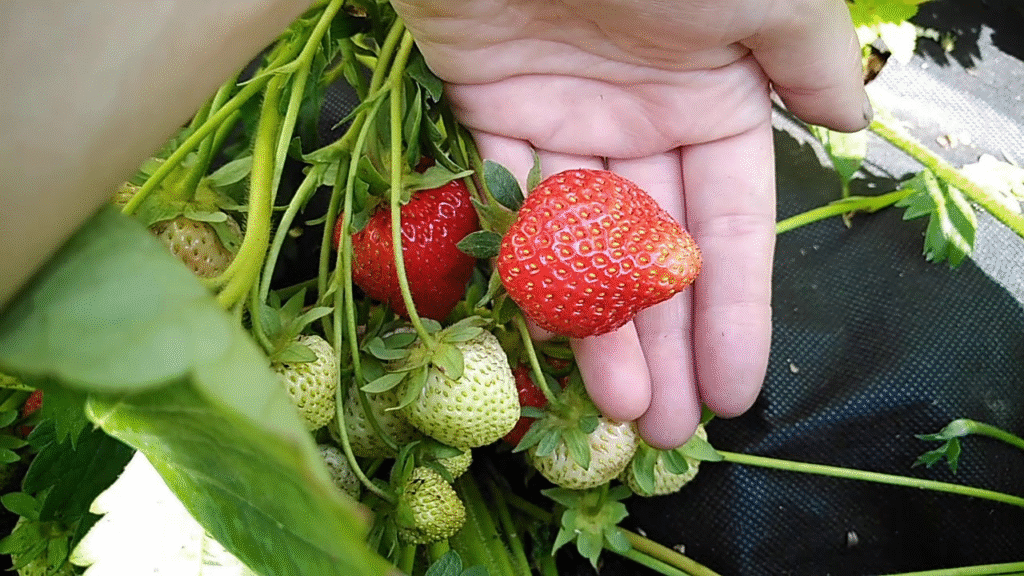
2. Plant In Full Sun

Strawberries love a good sunbath. Unfortunately, they don’t do very well in full or partial shade and need to be planted in a spot that receives at least 6-8 hours of sunlight on a daily basis. The best fruiting is achieved this way.
3. Used Raised Beds Or Containers
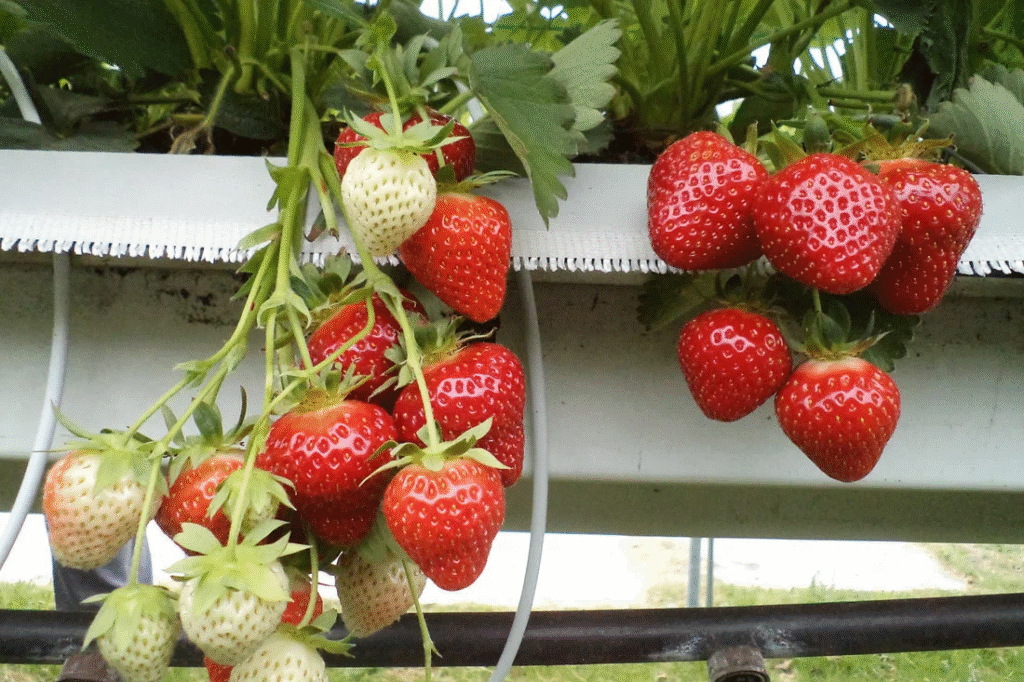
Using raised garden beds helps strawberry plants stay protected from certain diseases and have better drainage. These two factors combined are essential for maintaining good yields in the long run and keeping the plants healthy.
4. Start With Quality Soil
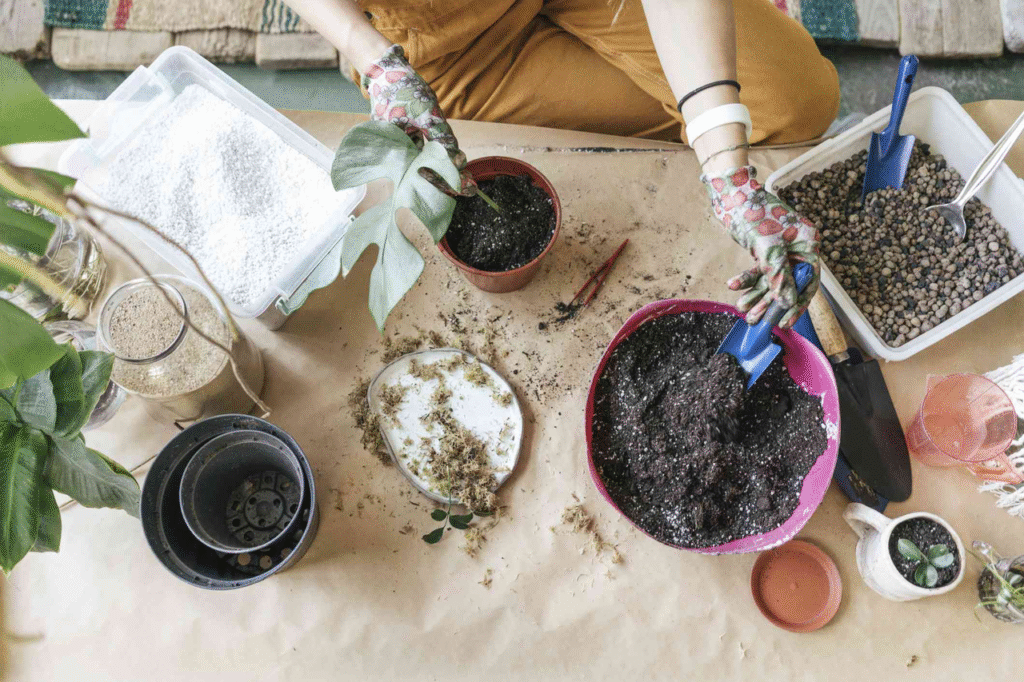
Instead of relying on store-bought potting mix or pre-made formulas, consider making your own soil. This DIY soil will be rich in beneficial nutrients and feature improved texture and drainage due to the addition of sand.
Creating your own seed-starting mix gives you complete control over the ingredients, ensuring your plants receive the best possible start.
5. Mulch With Straw Or Pine Needles
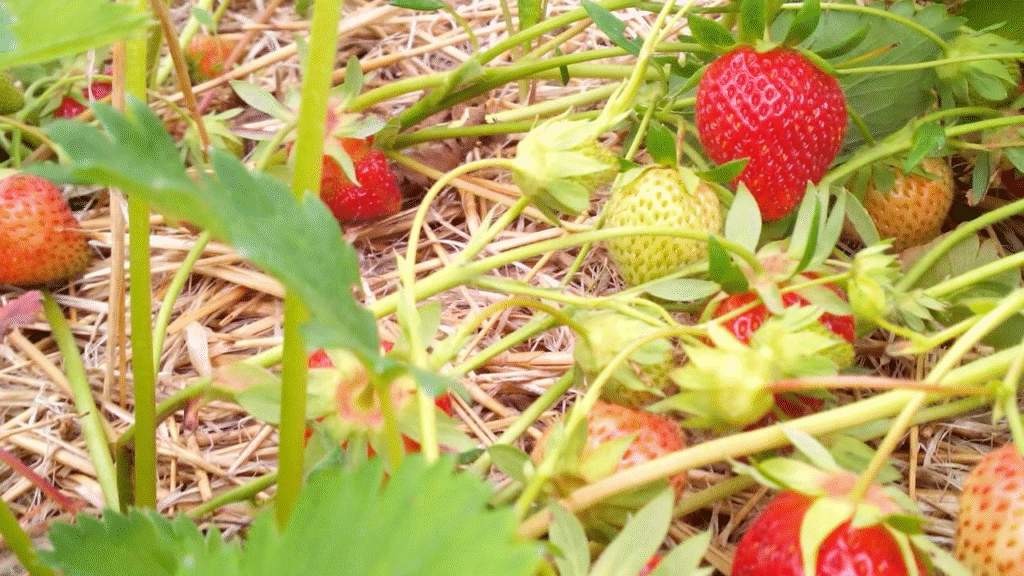
Mulching your strawberry plants is essential for retaining moisture and keeping the berries fresh and healthy. If you struggle with consistent watering, using straw or pine needles as mulch can help prevent your strawberry plants from drying out completely.
6. Cut Off The Runners

This is arguably one of the most important tips in this entire post!
To ensure healthy and productive strawberry plants, it’s crucial to cut off the runners (also known as suckers). These long, vine-like stems siphon energy away from the main plant, resulting in smaller berries. Regularly trimming the runners allows the plant to concentrate on fruit production.
7. Water Consistently!
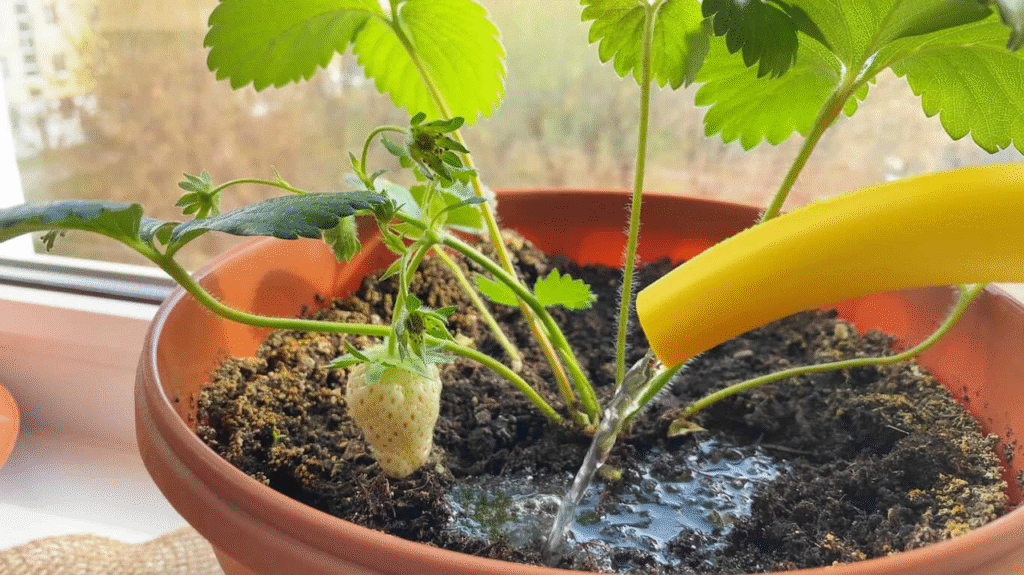
Strawberries require plenty of water—consistently. While it’s fine to have longer gaps between watering sessions, maintaining consistency over time is key. Deep, infrequent watering helps prevent dry fruit and promotes healthy growth.
8. Pinch First-Year Flowers
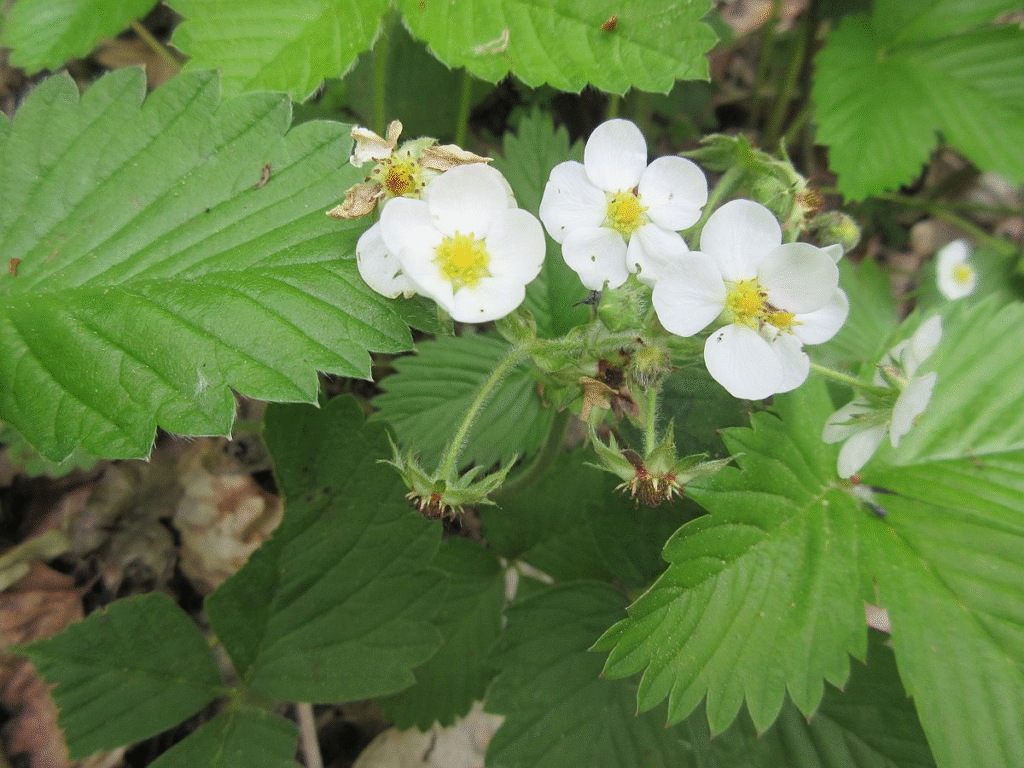
Pinching is a practice that has been overlooked in the gardening community, yet it can be incredibly beneficial for improving fruit yields when done correctly.
Typically, pinching off the flowers in the first year is the best approach, as it encourages stronger plants and enhances yields in no time.
9. Feed With Organic Fertilizer
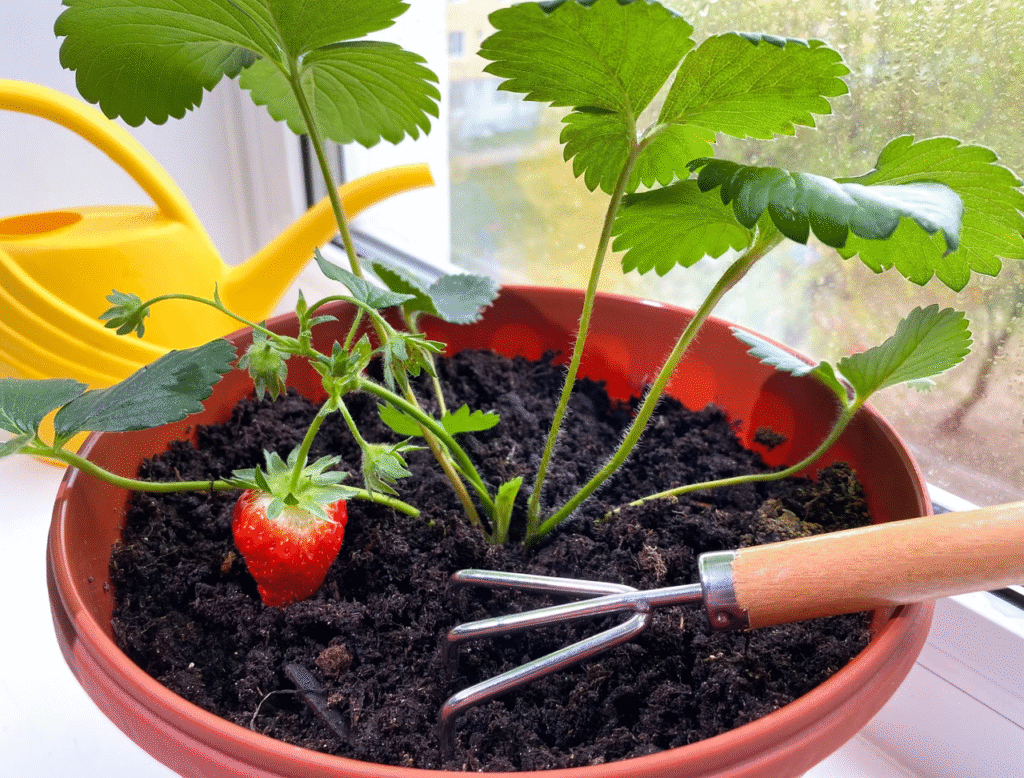
Regardless of whether you’re facing fertilization issues or nutrient deficiencies, it’s crucial to feed your strawberry plants with fertilizer, especially during the growing season, to support their growth and overall health.
Nutrient-rich soil is more likely to yield flavorful berries compared to poor, neglected soil. A balanced organic fertilizer typically works well, provided you maintain consistent feeding.
Here are some fertilizers I recommend:
- Coffee Grounds: This is one of my favorite tips! Spread used coffee grounds (make sure to let them dry in the sun first) around your strawberry plants. They add nitrogen to the soil and improve its texture. Plus, worms love coffee grounds!
- Epsom Salt: Here’s a simple homemade recipe: mix 1 tablespoon of Epsom salt with a gallon of water. Spray this powerful mixture on the leaves of your strawberry plants every two weeks to enhance their sweetness.
- Baking Soda: Sprinkle baking soda around the base of your strawberry plants. This “magic potion” (as I like to call it!) helps reduce soil acidity and promotes sweeter strawberries!
10. Protect From Birds

In addition to pests, birds can pose a significant threat to your strawberry plants. I once had whole strawberries ripped out by birds, causing chaos in my backyard garden.
I’ve found that hanging reflective CDs around the garden is an effective way to deter birds. While it does require some effort, it’s well worth it. If your primary goal is to protect your fruit, using netting is the best option.
Extra Tip: Do you have cinnamon at home? Sprinkling cinnamon powder around the base of your strawberry plants can help prevent fungus, mold, and pest attacks. It’s a simple solution, but it really works!
11. Rotate Plants Every 3 Years

I highly encourage all gardeners to practice crop rotation. By avoiding the planting of the same crops in the same area each year, you can prevent nutrient depletion in the soil and keep fungal or bacterial diseases at bay.
After growing strawberries, consider rotating with beans or peas to restore nitrogen, carrots or beets to enhance soil structure, or garlic or onions to deter pests and maintain overall soil health.
12. Harvest At Peak Ripeness

Many growers make the mistake of diligently growing their strawberries but harvesting them too early, which often results in inconsistent ripeness and some very unpleasant tasting berries.
For the sweetest taste, pick your strawberries only when they’re fully red.
Final conclusion
Growing strawberries can bring immense joy and benefits to gardeners, but achieving high yields and high-quality fruit requires attention to various factors. From maintaining soil moisture with mulch to regularly trimming runners, each step plays a crucial role in the plant’s development.
Additionally, using natural nutrient sources like coffee grounds, Epsom salt, and baking soda will help your strawberry plants thrive and produce sweet, delicious berries. Don’t forget to protect your plants from birds and pests with simple yet effective measures.
Finally, practicing crop rotation is essential for soil health, replenishing nutrients, and preventing disease. By implementing these techniques, you’ll create the best conditions for your strawberries to flourish, allowing you to enjoy abundant and flavorful harvests.
So, get started today and experience the joy that comes with growing strawberries!

